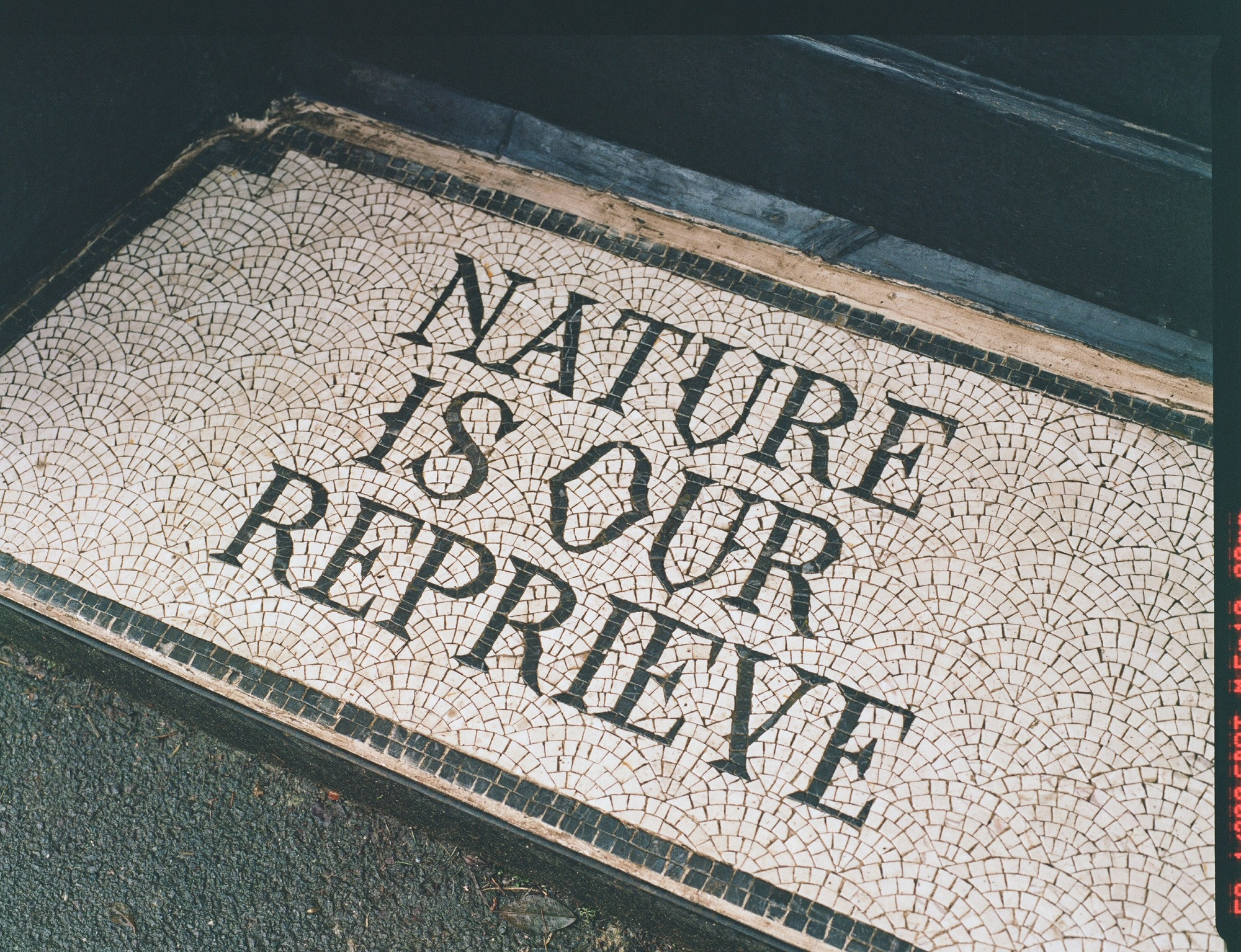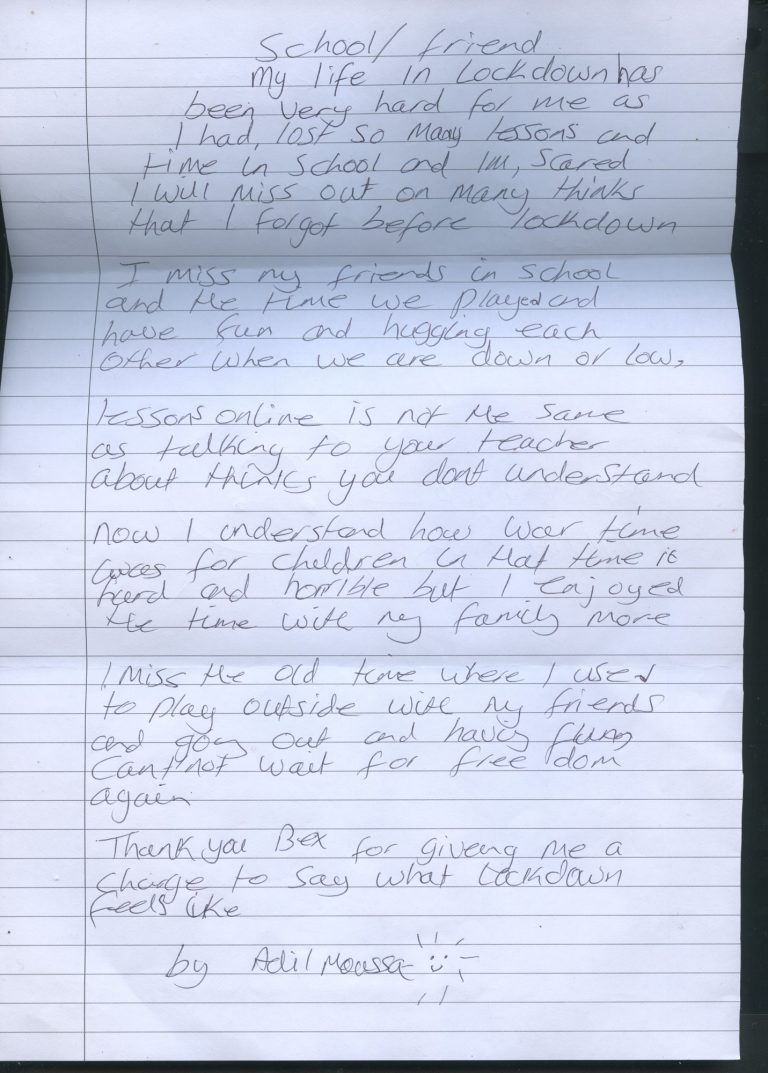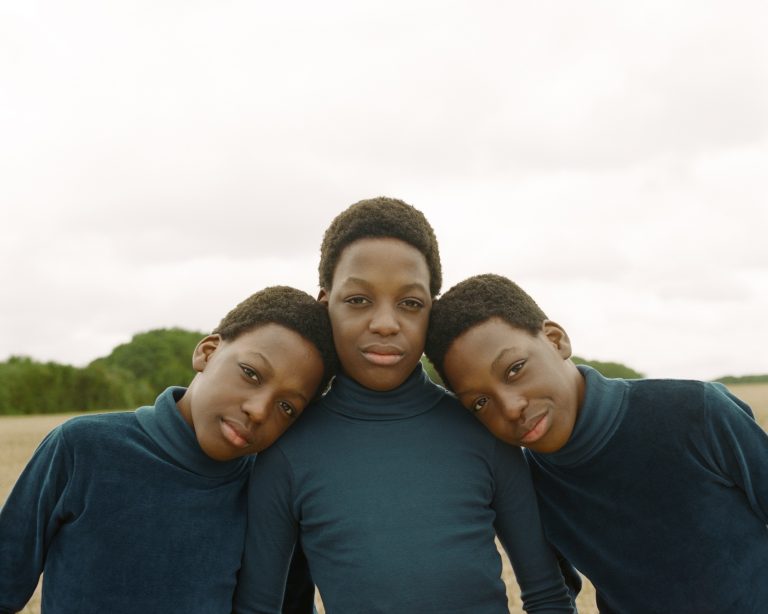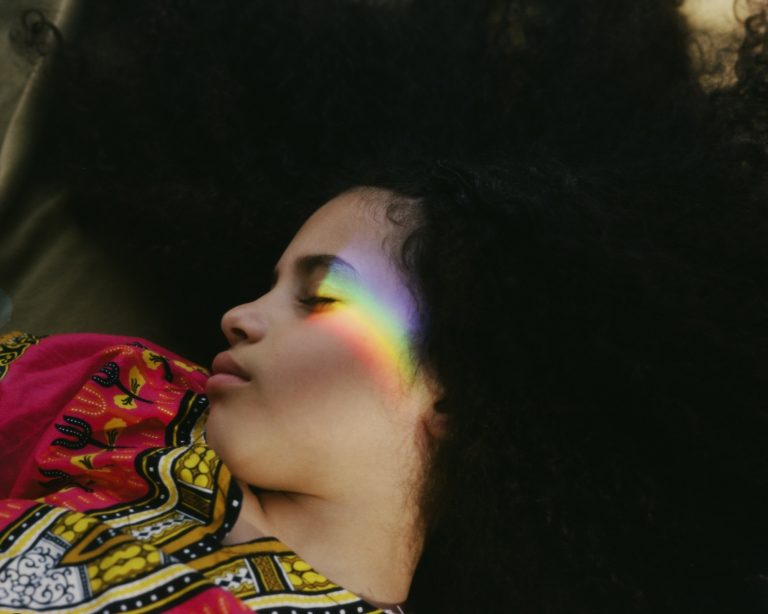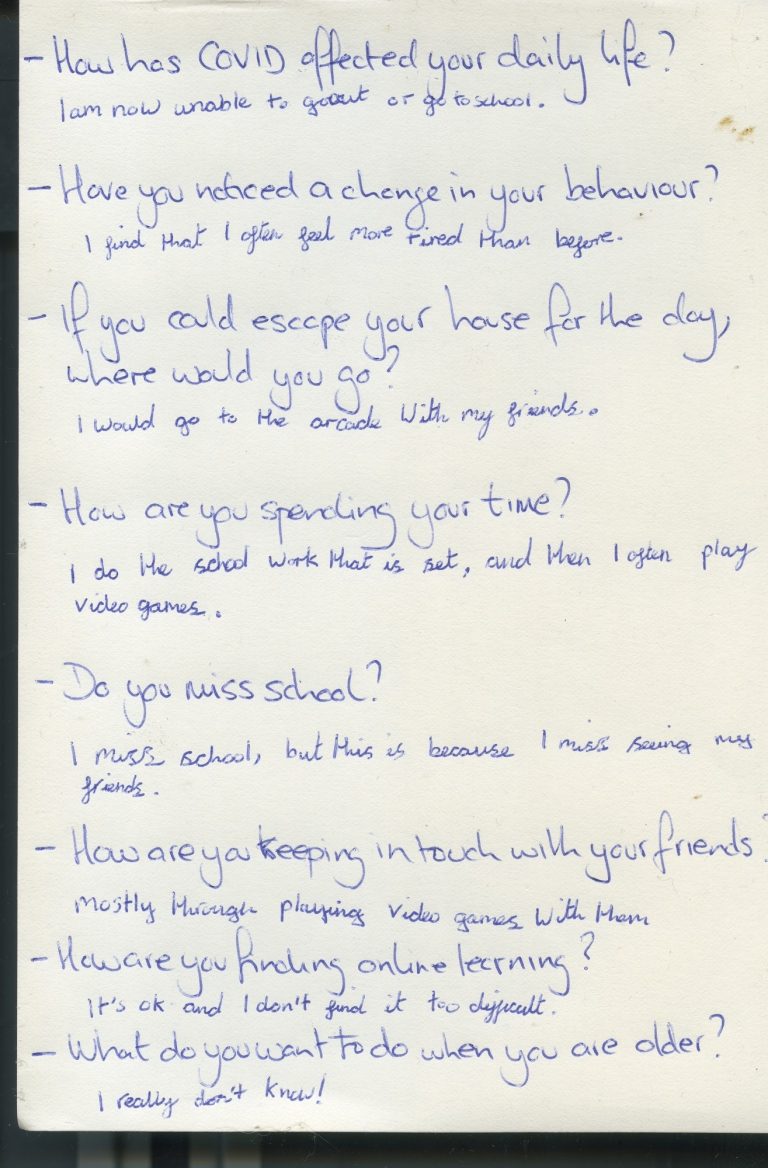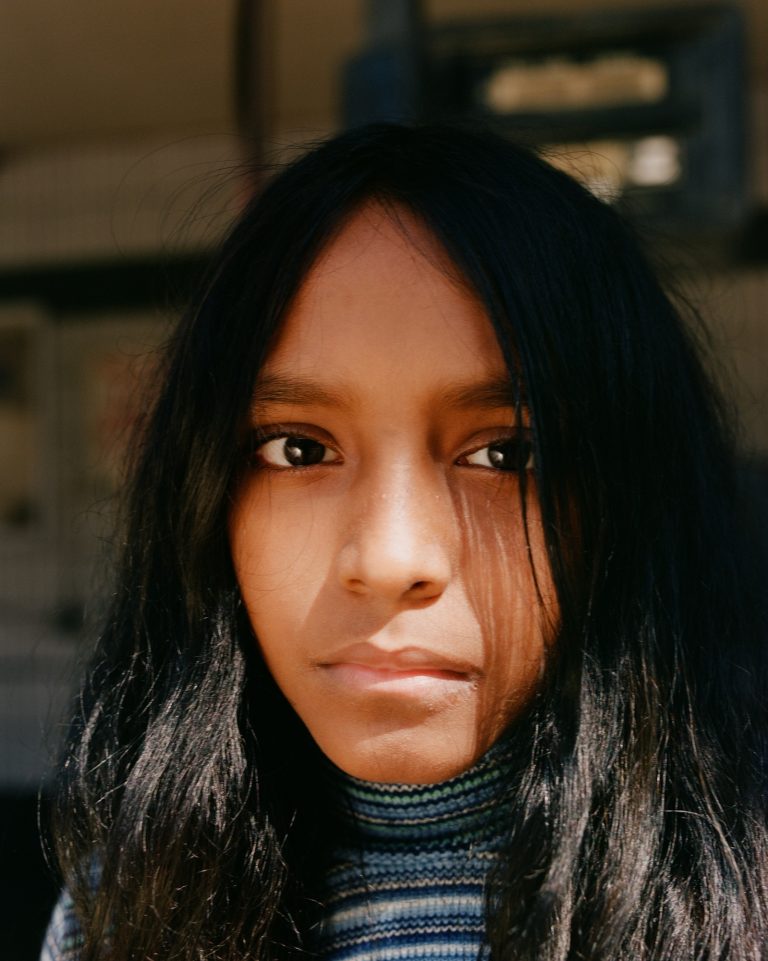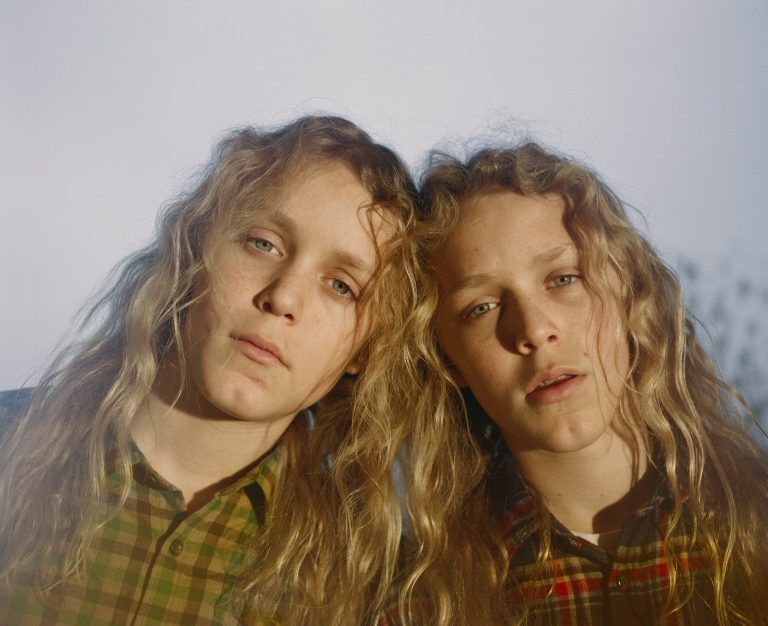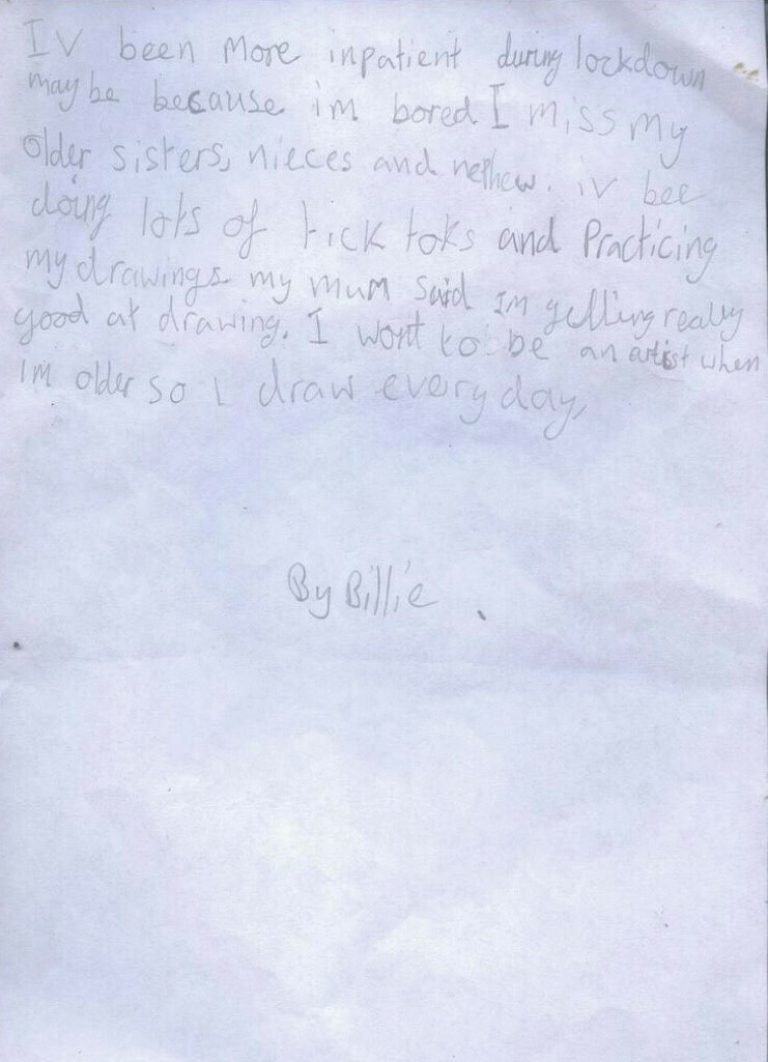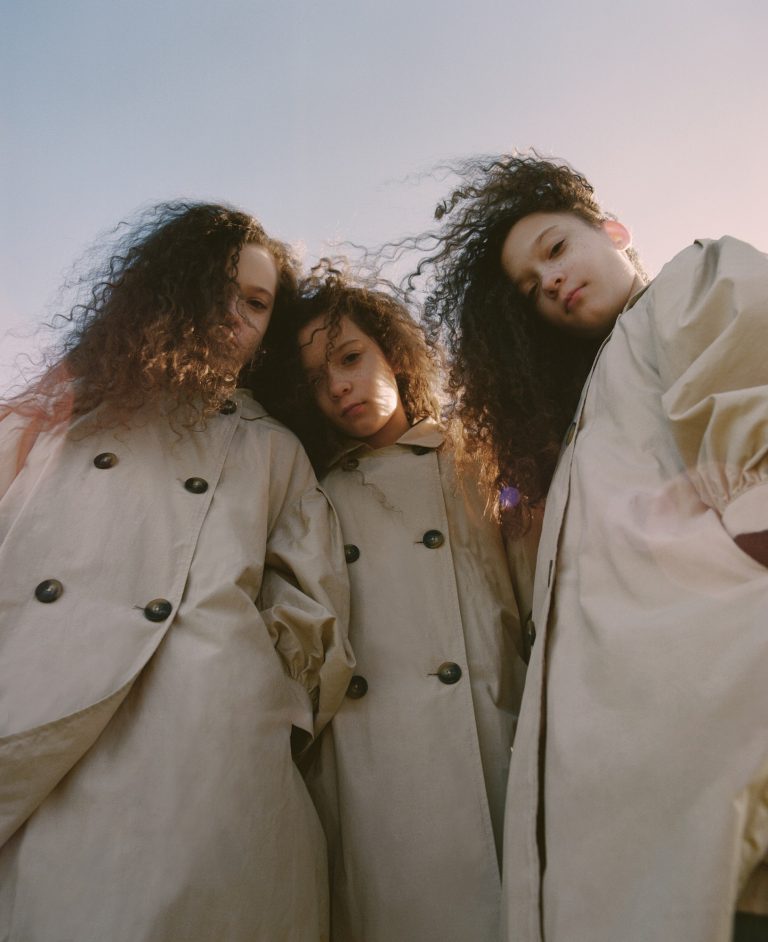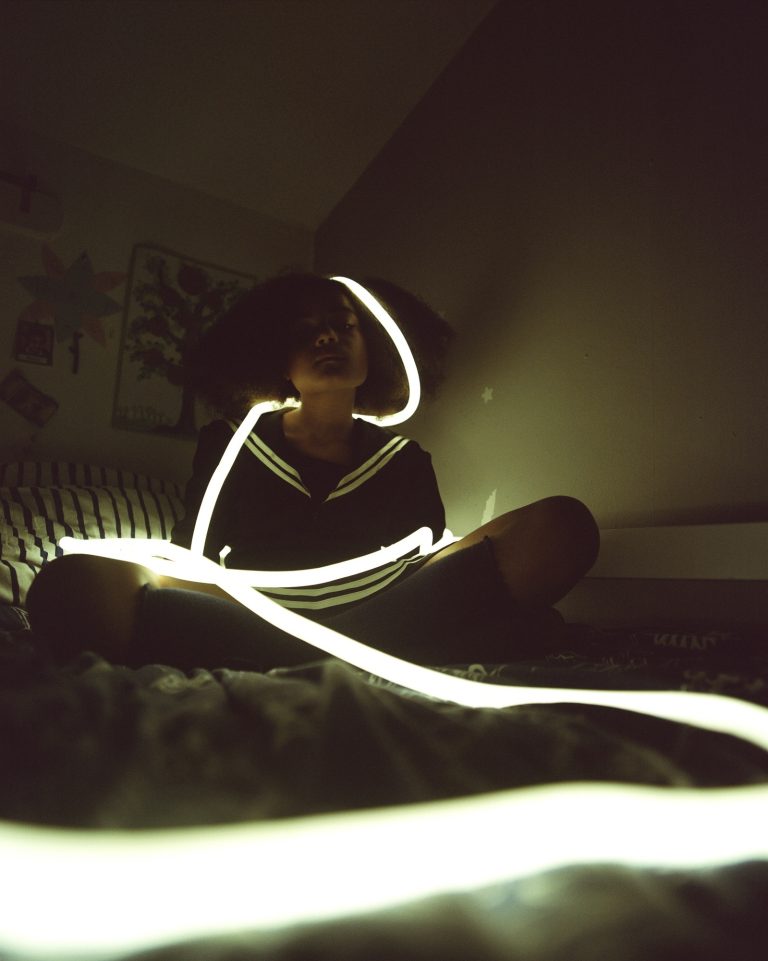
Children of Covid
Updated: 2021/07/09
- Photography
- Bex Day
- Interview
- Olivia Gagan
Olivia Gagan: How soon into the pandemic did you get the idea to start documenting the lives of children?
Bex Day: It was birthed after my first lockdown project, Seesaw. That was made when we were quite literally stuck at home and I couldn't shoot anyone else – so I turned the lens on myself. Seesaw was about the ups and downs of the pandemic and the effect on mental health, particularly OCD, which I have. And it talked as well about the negative social impacts, like stockpiling, in a more playful, humorous way.
I started Children of Covid during the second UK lockdown. I knew I wanted to make work about mental health, but I wasn’t sure who to focus on. At the time, my friend and her two-year-old daughter lived with me for a few months, and her daughter had a delay in speech. She was doing speech therapy, which I thought was really interesting. Nurseries were closed and she wasn't socialising with other kids enough, which was partly behind her not being able to speak. Fortunately she's speaking now, but that was the inspiration behind the project.
How did you work within the limitations of lockdowns and travel restrictions?
It was difficult; when we couldn't go inside homes, we would shoot outside. Obviously we were masked and followed the necessary precautions and protocols.
Despite the complexities of shooting, the images feel very structured and composed, and the children are styled. What was behind that?
My inspiration came from a few different photographers – I was focusing on the work of Sally Mann, and photographers from the sixties and seventies. There was always a question mark around whether the children’s own clothes would be suitable. So I worked with a stylist, Adam Winder – he would order in clothes and we’d also use whatever we had available. But as I continued the project, I used the childrens’ own clothes anyway, and picked out with them the clothes they liked the most and what they felt most comfortable in.
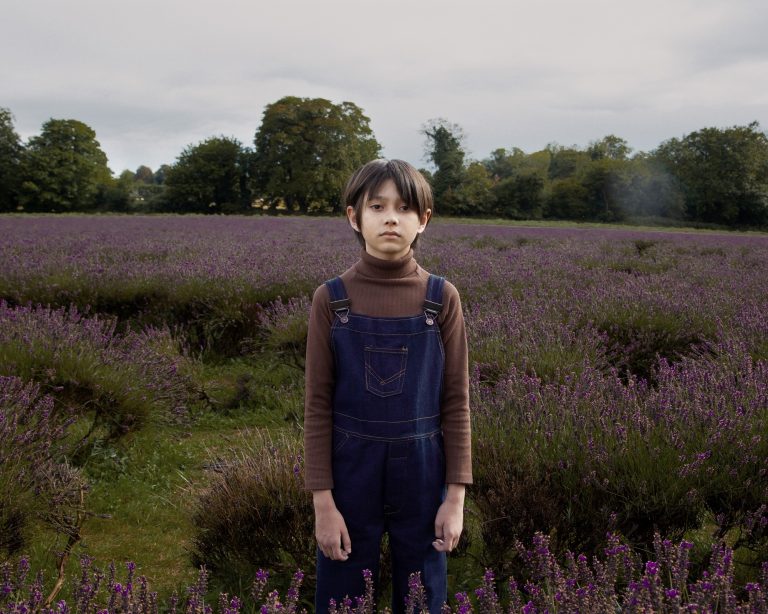
The children are on sofas, or beds, or in parks or porches or with their pets. And those are all things that have become really symbolic of the time we've just lived through – spending all day on the sofa or working from bed, or only having the park to access nature. Those were all things that felt very mundane in lockdown, but you've imbued them with a lot of beauty in these images.
So many of the kids were mourning not being able to see their friends. I think for a lot of children, animals and their pets were their only companions in a time of isolation. I thought it was really important to show who they've been hanging out with and where.
The children seem really dignified too. They just look very clear-eyed, and serious.
I think that’s because one of my main goals was to empower the children. Every kid hand-wrote a letter alongside their images about their experiences with Covid-19. I really wanted to give the children a voice because often, they're not really given a chance to speak up in society. I wanted to dignify their experiences and share their stories. And [personally] I was dealing with childhood trauma in therapy. I think that also led me to focusing on children, too.
You studied journalism at university. Do you think that played into your decision to interview the children and include that written word element as well
I think so. Having a narrative is very important within my practice. I think it's always good to add another dimension with words, and I've also made a film which shows a bit more about the lives of the children.
Is it harder to photograph children as portrait subjects, as opposed to adults? What's the difference?
I guess the difference is that they're shorter, and they don't really care about the process and the project! But similar practice applies – making them feel comfortable, and learning about them, and having that show through within the image.
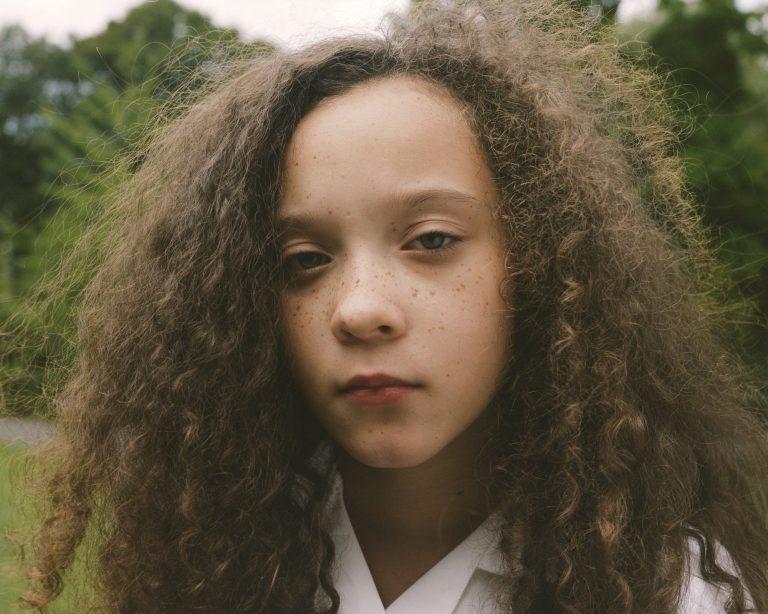
Children of Covid feels like a historical document already, because it’s captured a really specific moment in time. What do you hope people viewing these images in the future or going to see the exhibition now take from these portraits?
Everyone has had a difficult time. But I guess I want viewers to question the lasting impacts of the pandemic on children, and to think about how their lives are going to develop and what they've missed out on in this year-and-a-half. The importance of championing children’s mental health and becoming more vocal about it – we’ve teamed up with the charity Young Minds and we have a child arts psychotherapist who’s going to be doing a session with the kids.
How was the pandemic changed you?
I've developed a lot more patience. The past year has just made me more grateful and appreciative, especially for work. It was crazy when [the UK government] were telling creatives to retrain in another industry. I was like, what else can I do? I don't want to do anything else. Now work has picked up again, it's a definite relief. So, it’s just continuing that attitude of gratitude and appreciation, I suppose.
Children of Covid is at the Offshoot Gallery in London from 9th July to 31st July. To coincide with the exhibition, childhood mental health charity Young Minds is launching a limited edition of 100 exhibition prints at £100 each. 25% of the profit made from the print sales will go directly to the charity.
Related Articles

Liberty 150 x150 curated by Leith Clark: The Founder Interviews

Liberty 150 x150 curated by Leith Clark: The Founder Interviews

Liberty 150 x150 curated by Leith Clark: The Founder Interviews

Liberty 150 x150 curated by Leith Clark: The Founder Interviews
